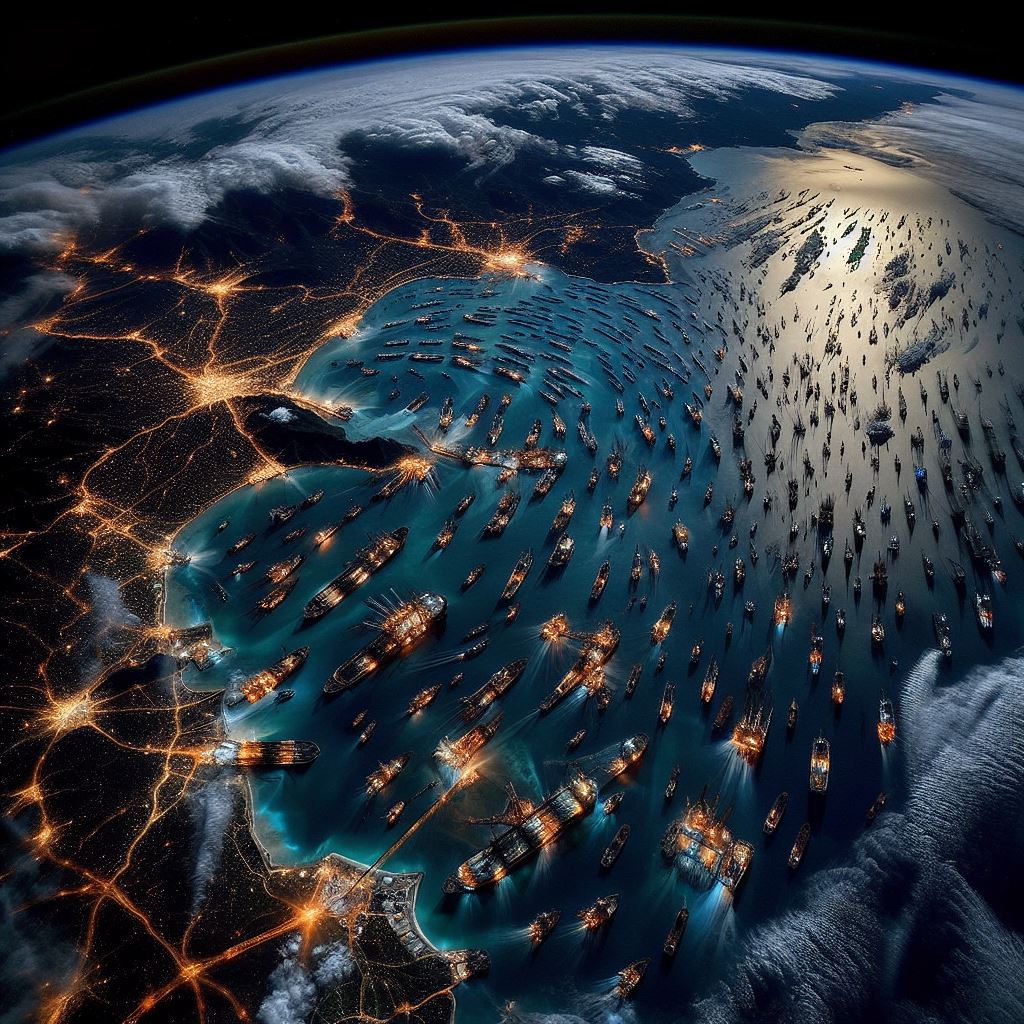
Satellite imagery, coupled with machine learning, has provided a groundbreaking insight into the maritime industry, revealing a far more extensive presence of fishing and transport vessels at sea than publicly available data indicates. This revelation calls for increased attention from policymakers due to its implications for global resource management.
The oceans, as a shared global resource, involve diverse customs, laws, and motivations across different countries and regions. Despite the adoption of the automated identification system (AIS) worldwide, which precisely tracks ship activities, its application is not universal. This leads to a lack of clarity in crucial data such as the number of fishing vessels, their operators, and the extent of their catch, resulting in a fragmented landscape of local, proprietary, and government-approved figures.
To address these challenges, satellite imagery emerges as a game-changer, offering an unprecedented perspective on maritime activities. The research conducted by Fernando Paolo, David Kroodsma, and their team at Global Fishing Watch analyzed two petabytes of orbital imagery from 2017-2021, revealing that approximately three-fourths of industrial fishing vessels and nearly a third of transport and energy vessels are not publicly tracked.
While these "not publicly tracked" vessels are not entirely unaccounted for, reasons vary. Smaller vessels, those in areas with limited satellite coverage, and vessels deliberately avoiding detection contribute to the absence of their data in public tracking systems. Some countries use proprietary tracking methods limited to their waters, hindering comprehensive global monitoring.
The study underscores the necessity of openly tracking fishing vessels for effective fish stock monitoring, especially as the global population grows and oceans warm. Regions like Iceland and the Nordics exhibit high tracking levels, while Southeast Asia, notably off the coasts of Bangladesh, India, and Myanmar, has minimal tracking.
Contrary to AIS data, the satellite analysis reveals a significant under-representation of the Asian fishing industry. China alone appears to account for around 30% of global fishing, challenging our preconceived notions about the scale and distribution of fishing activities worldwide.
This revelation emphasizes the importance of accurate data for informed policy-making and scientific research. The study calls for collaboration with authorities to assess and address issues such as fishing in protected areas, as observed around the Galapagos Islands, a violation of international law.
While the current findings mark the first version of the open data platform, continuous processing of new satellite imagery ensures up-to-date information. Global Fishing Watch's initiative aims to improve our understanding of maritime activities, laying the foundation for more effective policies and sustainable resource management.